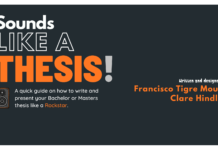Marketing students and professionals, follow me here:
Imagine this scene: You are feeling unwell and go to the doctor. You believe you have a fever and the doctor measures your body temperature, but he is unsure his thermometer is working properly.
Would you use the results to define if you should take antibiotics? Probably NOT. Why? Because the results are probably not valid, as the measurement instrument used to check your temperature (the thermometer) is inaccurate.
This is exactly what often happens in consumer research. Results that are derived from poorly measured studies must not be used as the basis for any managerial decision.
In case you a marketer or someone developing a study to measure concepts related to “consumer perception”, it is extremely difficult to develop questions for them. It may seem easy, but trust me, it isn’t.
For example, concepts may include:
- Attitude towards an Advertisement
- Visual Appeal
- Meaningfulness
- Trust
- Behavioral intention
- Risk
And many other concepts. Would you just randomly create questions to measure them? NOOOOO!
Why You Can’t Just Make Up Questions?
Concepts, such as the ones described above, are much more complex than they may seem. Simply asking a large sample of consumers complex concepts through one single question, such as “Are you satisfied with…“? or “Do you trust…“? runs an enormous risk of your study having no validity (you end up measuring something different than what you actually intend).
Just to name one concern. Trust me, there are many others.
For this reason when researchers wish to measure such concepts they use something called a “scale“.
What is a Scale?
In short, a scale is a group of “items” that together measures a concept. And what is an “item”? An item is a sentence or an anchor that measures the concept.
For example: Imagine you work at a theme park and you wish to measure consumers “anxiety” level, because you wish to know in general if consumers that ride on the roller-coaster have high or low levels of anxiety.
But how would you measure “anxiety” in a person? Using a previously developed scale! There are many, for example the one developed by Lovibond and Lovibond (1995). It contains 7 “items“, that together measure “anxiety“.
Here are the items:
1. I am often aware of the action of my heart in the absence of physical exertion (e.g,
heart racing, skipping a beat).
2. I often experience dryness in my mouth.
3. I often experience difficulty breathing (e.g. excessively rapid breathing,
breathlessness in the absence of physical exertion).
4. I often experience trembling (e.g. in the hands).
5. I worry about situations in which I might panic and make a fool of myself.
6. I often feel close to panic.
7. I feel scared without any good reason.
Those 7 items, in combination (together), measure the concept (“anxiety”).
See the original work of Lovibond and Lovibond (1995) at:
- Lovibond. P. F. and S. H. Lovibond (1995) (1995), “The Structure of Negative Emotional
States: Comparison of the Depression Anxiety Stress Scales (DASS) with the Beck Depression and Anxiety Inventories,” Behaviour Research and Therapy, 33 (3), 335-343.
I have used “anxiety” as an example, but there are scales to measure pretty much EVERY perceptual concept relevant to marketing.
For example:
- Attitude Toward the Ad (Affective)
- Attitude Toward the Product (High Tech)
- Behavioral Intention (Brand)
- Brand Equity
- Compulsive Buying
- Credibility of the Company
- Ease of Use
- Flow (Shopping)
- Involvement with the Brand (Pleasure)
- Joy
- Loyalty to Company (Post-Complaint)
- Purchase Intention
- Quality of the Product
- Satisfaction with Service
And many more…
Where do you find these scales? In MARKETING SCALES HANDBOOKS. I explain later in this article.
And what do you do with these “items”? You measure them through 3, 5, 7 point “Likert type Scales” (or higher). For example, ranging from 1, Fully Disagree until 5, Fully Agree.
IMPORTANT: After all “items” have been measured, I advise you contact your supervisor and she or he will explain to you in detail how to analyze them. It is beyond the scope of this article.
How Do You Use the Marketing Handbook of Scales?
In order to make it even easier for you and my students, I have developed a tutorial to take you step by step on how to use the marketing scales handbook.
And What Should You Do With The Scales?
You add them on your questionnaire to measure the factor that you wish to measure. Sometimes minor adaptations must be made to adjust to the context in which you are applying, and that is OK. But make sure to discuss the adaptations to the original versions of the items with your supervisor!
Here are some common questions students always make during my marketing research classes:
- Are there scales to measure any relevant marketing concept?
- Nowadays, there are MANY scales available. In case you are measuring any consumer perception concept, the odds are immense that there are previously validated scales you can use in your study.
- Nowadays, there are MANY scales available. In case you are measuring any consumer perception concept, the odds are immense that there are previously validated scales you can use in your study.
- What are the main advantages in using such scales?
- They have been previously developed, validated and have achieved satisfactory reliability scores (internal consistency of the scale). This reason alone should already justify it.
- You can quickly apply to your study a measurement that has proven to be both valid and reliable. And no one will question it in your study! (if you are developing the questions yourself, you cannot assure either of these two facts).
- Do you have to include all items or can you choose which ones to include in your questionnaire?
- Normally you will include all items of the original scale. Remember, together they measure the concept. However, some items can be removed if they do not fit your context of study. But always double-check with your supervisor.
How to Find Scales: (1) The Two Main Marketing Scales Handbook
The scale handbooks are basically a compilation of decades of work from researchers around the world to develop measurements of concepts that are relevant. It is simply impossible to calculate the time, effort and investment required for such a contribution.
Here are the two main marketing scale handbooks used in academia and the industry:
1. Marketing Scales Handbook – Volume 9
 Author: Gordon C. Brunner II
Author: Gordon C. Brunner II
Comment: This is my favorite scales handbook. I used during my Masters, PhD, private research projects and consultancy. It contains an extremely vast compilation that has always fulfilled my personal and work related needs. In case your university does not have it, make sure to tell them to order it.
How to get it?: Official website or Amazon.
2. Handbook of Marketing Scales: Multi-Item Measures for Marketing and Consumer Behavior Research.
Comment: Also a great handbook of scales. Personally I use it to complement the previous one, but also highly recommend it to students and staff and my university has a few copies.
How to get it? Amazon.
How to Find Scales: (2) Looking for Specific Scales
In case your university does not have the books mentioned above, you can still find the scales you need. And how?
Simple.
Do the following:
- First: Search here for the table of content of the Handbook of Marketing Scales.
- It contains the variables, names of authors and the reference of the articles where the scale was published.
- Second: Search on Google Scholar for the original articles that you found on the table of content described on the step before. The original papers will contain the scale items on the analysis or results section, or on the appendix of the paper (sometimes even with the entire questionnaire).
Conclusion
It does not matter if you are developing a Bachelor, Masters or PhD thesis, a consultancy project or simply research for your own agenda.
In case you need to measure concepts related to consumer perception, my suggestion is for you to use previously validated scales from a marketing scales handbook.
You will assure validity to your measurements and you will have an indication of reliability of the scale based on previous studies where the scale was used.
PS: And never forget to properly reference the authors you use and to discuss with your supervisor how to analyze the scales statistically, OK? Unfortunately this discussion is beyond the scope of this paper.
Music Recommendation
I just finished writing this article listening to a compilation of amazing piano players. Hopefully these piano players will be as inspiring to you while studying as they have been to me while writing:
- Rachmaninoff
- Chopin
- Beethoven
- Bach
- Brahms






